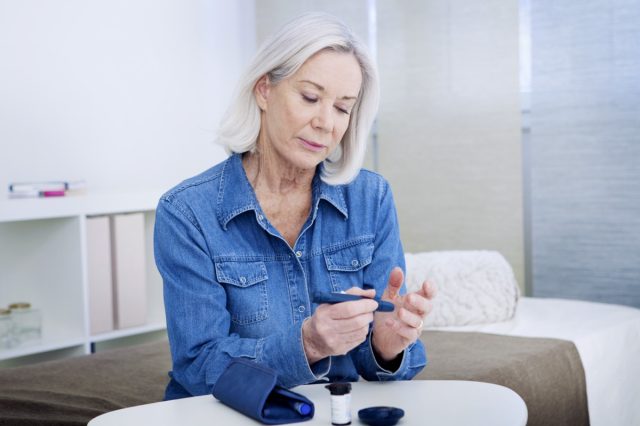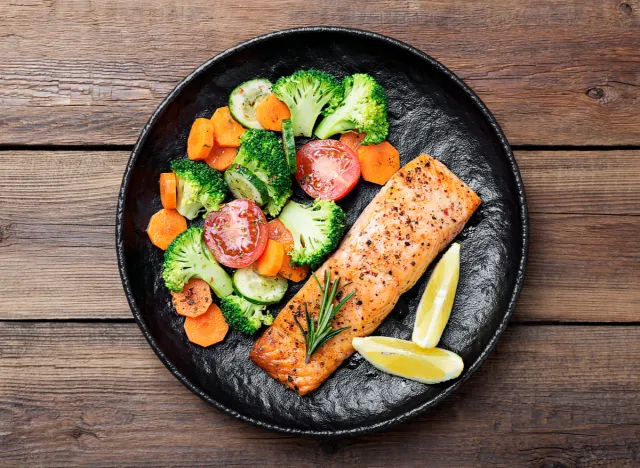Diabetes affects over 37 million people–that’s 1 in 10 Americans and although the common disease is well known, “1 in 5 people with diabetes don’t know they have it,” the Centers for Disease Control and Prevention states. In addition, “96 million American adults—more than 1 in 3—have prediabetes. More than 8 in 10 adults with prediabetes don’t know they have it,” the CDC says.
There’s different types of diabetes and Maddison Saalinger, registered and licensed dietician at the Diabetes Research Institute explains, “Type 1 and Type 2 diabetes can affect both children and adults. Type 1 diabetes is autoimmune, and it happens when the body attacks insulin producing cells. Type 2 diabetes is when the body cannot use insulin properly, becomes more resistant to it, and eventually produces little or no insulin.”
If left untreated, diabetes can lead to major health complications such as heart disease, nerve damage, kidney damage, vision loss, depression, skin and mouth conditions and more. So knowing the signs of diabetes is vital for your health and overall well-being.
Eat This, Not That! Health spoke with experts who share what to know about diabetes, symptoms to watch out for and tips on how to lower the risk. Read on—and to ensure your health and the health of others, don’t miss these Sure Signs You’ve Already Had COVID.


Dr. Barry Sears, President of the non-profit Inflammation Research Foundation tells us, “Diabetes is the result of insulin resistance. Insulin resistance is a general term for a disrupted metabolism. Insulin resistance precedes the accumulation of excess body fat. The continued presence of insulin resistance leads to pre-diabetes (i.e., metabolic syndrome), and eventually type 2 diabetes. Approximately 90 million Americans have pre-diabetes, and about 30 million have type 2 diabetes. The cause of insulin resistance is a pro-inflammatory diet that inhibits the master regulator of metabolism, which is AMPK.
Pre-diabetes is indicated by increased blood insulin levels trying to drive down blood glucose levels. However, the first indication of the potential of pre-diabetes comes from the accumulation of visceral (i.e., belly fat).”
Saalinger says, “A balanced lifestyle can help reduce the risk of diabetes-related complications, as well as supporting overall physical and mental health. This includes a healthy diet and regular exercise. It does not have to be overly restrictive, but rather a routine that sticks and is manageable. It is especially important for those with a diabetes diagnosis to engage in physical activities, not only to lower blood sugar levels in the body, but also to develop healthy lifestyle behaviors that are enjoyable. In fact, Type 2 diabetes can be prevented or delayed with proper diet and exercise.”


Dr. Sears says it’s important to be aware of the following symptoms:
Increased Thirst
“Increased thirst is one of the first indicators as the body is trying to dilute excess blood glucose from the blood by increased urination and, thus, subsequent thirst. The best blood test for the earliest indication of pre-diabetes is called HOMA-IR. The metabolic defect in AMPK activity that characterized pre-diabetes can be more easily corrected in the person with pre-diabetes than after the development of type 2 diabetes.
Increased Urination
READ RELATED: Jeni Larmour was found dead hours after being dropped at university after being given ketamine
Once type 2 diabetes develops, the insulin-secreting cells in the pancreas have already begun to die off, and the body tries to remove the excess blood sugar by increased urination.
Increased Hunger
Although blood sugar levels are rising in the blood, the blood sugar is not reaching the brain, and that signals the hypothalamus to consume more food.”


Saalinger emphasizes, “Food is fuel for the body and has a very real impact on physical – and mental – wellness. When we eat a balanced diet, we are more likely to achieve better health and wellness outcomes and prevent, or manage, chronic conditions like diabetes. While it takes effort to maintain a healthy diet that assists in managing blood sugar levels, it doesn’t have to be boring, and it also doesn’t have to mean giving up your favorite foods. Start by making a list of your favorite foods. From there, think about how you can build your meals around them. Consider how you can add in more non-starchy vegetables, like salad greens, or high-quality lean proteins, like salmon or chicken.”
Dr. Sears adds, “Of course, the best prevention for preventing and treating type 2 diabetes is following an anti-inflammatory diet. This can be defined as any diet that keeps HOMA-IR lower than one.”


Saalinger states, “The Centers for Disease Control and Prevention guidelines recommended levels for health benefits include 150 minutes a week of moderate-intensity activity, or 75 minutes a week of vigorous-intensity activity. Exercising is one of the most critical components of a healthy lifestyle, and we have long known that exercise helps improve both physical and mental health. It is especially important for those with a diabetes diagnosis, as it is a great tool for lowering blood sugar in the body. Exercising can lower your blood sugar levels for up to 12 hours. While some people prefer going to the gym or the yoga studio, for others that may simply not be the best way to form long term habits.
The good news is that exercise isn’t limited to spending hours on the treadmill or elliptical machine. Incorporating 30-minutes daily of activities like walking, playing basketball or dancing are great ways to establish fitness habits that can stick. Whether you prefer to do these activities on your own or in a group, you will have a much better chance of forming behaviors that work when you select activities that you enjoy.”


“There are foods that affect blood sugars more than others,” Saalinger shares. “We know that items like sugar-sweetened beverages, white bread, rice and pasta, fruit flavored yogurt, sweetened breakfast cereals and flavored coffee drinks, to name a few, are made of simple sugars. Simple sugars are low in fiber and therefore are digested a lot quicker, which can lead to blood sugar spiking. Items like these, I would say, are to be chosen sparingly. Instead, choosing more fiber rich carbohydrates like whole grains, non-starchy veggies and fruits can lead to better glucose management.”


According to Saalinger, “Managing and preventing type 2 diabetes is possible with healthy habits that don’t restrict your lifestyle. It’s simply about finding what works for you and committing to building habits that stick through a routine. We all have the power to prevent and limit the impact of this disease, and no one has to do it alone. Working with a nutritionist or diabetes educator can help you identify opportunities to create a healthier lifestyle that you enjoy and get you out of bed every morning.”


At the Diabetes Research Institute (DRI), our goal is to find a cure for diabetes as soon as possible and hopefully close our doors, but until then, we create and supply a library of support resources on diabetes management, with articles ranging from “What Is Diabetes?” to tips on how to best manage an individuals’ blood sugar levels. We encourage everyone to turn to our resources to learn more about this disease, its prevention and management.”
Source:










